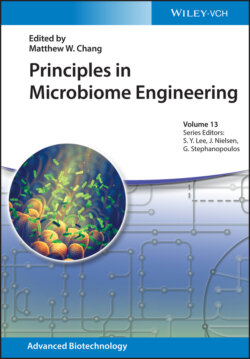Читать книгу Principles in Microbiome Engineering - Группа авторов - Страница 21
1.1.2.2 Probiotics
ОглавлениеProbiotics are live beneficial microbes that supplement certain health‐benefiting functions lacking in the human host [48, 49]. To qualify as a probiotic, the microbes must be resistant to gastric juices and bile acids, compete with the local microbiota, and localize in the gut for a short period, on top of having health‐benefiting properties [50]. There have been extensive studies suggesting that probiotics confer health‐benefiting properties [51] and alleviate negative side effects of antibiotic‐associated diarrhea [52]. There are various probiotics from different phyla, such as Lactobacillus sp. and Bacillus coagulans (Firmicutes), Bifidobacterium (Actinobacteria), E. coli Nissle 1917 (Proteobacteria), and Saccharomyces boulardii (Ascomycota). It is well documented that certain probiotics such as E. coli Nissle 1917, S. boulardii, and certain Lactobacilli have been used to treat gastrointestinal infections and gut‐related complications [48]. Spore‐forming bacilli such as B. coagulans were used to treat rheumatoid arthritis through gut‐mediated anti‐inflammatory properties [50]. Other studies have also shown that S. boulardii have been used to treat skin wound infections, while Lactobacilli are commonly used to maintain healthy vaginal flora to prevent bacterial vaginosis (BV).
